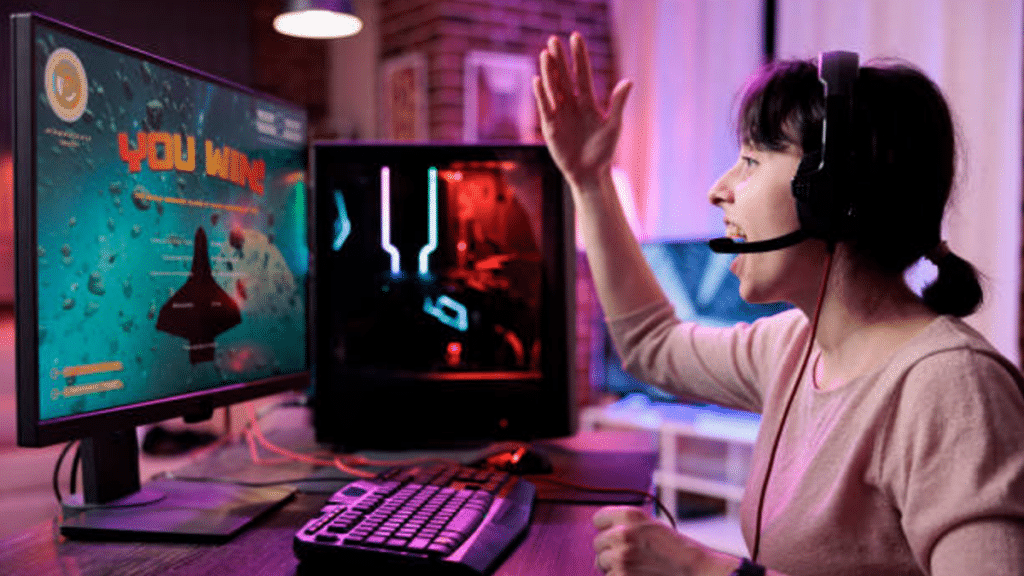In the realm of gaming, technology continues to push boundaries, creating immersive experiences that transport players to new worlds and dimensions. Among these advancements, Augmented Reality (AR) and Virtual Reality (VR) stand out as two transformative technologies reshaping the gaming landscape. While once seen as distinct entities, AR and VR are now converging, offering gamers a seamless blend of virtual and real-world experiences. This integration marks a significant evolution in gaming, promising unparalleled levels of immersion and interactivity. Let’s delve into the intricate fusion of AR and VR in gaming and explore the endless possibilities it brings.
The Evolution of AR and VR:
Augmented Reality and Virtual Reality have evolved significantly since their inception. VR, which immerses users in entirely virtual environments, gained prominence with devices like the Oculus Rift and HTC Vive. On the other hand, AR overlays digital elements onto the real world, as popularized by liga178 games like Pokémon GO. Initially, these technologies operated in isolation, each offering unique experiences to gamers.
Convergence of Realities:
However, the boundary between AR and VR is becoming increasingly blurred, leading to the emergence of Mixed Reality (MR). MR combines elements of both AR and VR, allowing digital content to interact with the real world seamlessly. This convergence opens up a myriad of possibilities for gaming, as it enables developers to create experiences that blend virtual objects with physical environments.
Enhanced Immersion:
One of the most significant advantages of integrating AR and VR in gaming is enhanced immersion. By combining virtual elements with the real world, players can experience games in a more lifelike manner. Imagine battling virtual monsters that appear in your living room or exploring ancient ruins that materialize in your backyard. Such experiences blur the line between fiction and reality, drawing players deeper into the game world.
Interactive Gameplay:
Moreover, the convergence of AR and VR enables more interactive gameplay experiences. With AR technology, players can interact with virtual objects overlaid onto their surroundings. For example, they can solve puzzles by manipulating digital artifacts or engage in virtual combat against opponents in real-world settings. This interactivity fosters a deeper level of engagement, as players actively participate in shaping the game environment.
Physical Interaction:
Another compelling aspect of integrating AR and VR is the potential for physical interaction. While VR typically requires specialized controllers or motion-tracking devices, AR allows players to use their hands and body movements to interact with virtual elements. This seamless integration of physical and digital interaction enriches the gaming experience, making it more intuitive and immersive.
Social Integration:
Furthermore, the convergence of AR and VR in liga178 gaming facilitates social interaction. Multiplayer experiences become more engaging as players can see and interact with each other’s virtual avatars in real-world environments. Whether teaming up to tackle challenges or competing against each other in virtual arenas, players can share memorable experiences in a blended reality setting.
Practical Applications:
Beyond entertainment, the integration of AR and VR has practical applications in various industries. From education to healthcare, these technologies offer innovative solutions for training, simulation, and visualization. In gaming, this convergence opens doors to new genres and experiences previously unattainable. For instance, location-based AR games can transform cities into interactive playgrounds, while VR simulations can provide immersive training for pilots, surgeons, and other professionals.
Challenges and Considerations:
Despite its immense potential, the convergence of AR and VR in gaming poses several challenges. Technical limitations, such as hardware requirements and software compatibility, may hinder widespread adoption. Moreover, ensuring seamless integration between virtual and real-world elements requires sophisticated algorithms and precise tracking technology. Additionally, concerns about privacy and safety in augmented environments must be addressed to ensure a positive user experience.
The Future of Gaming:
Despite these challenges, the integration of AR and VR in gaming represents a paradigm shift in how we experience interactive entertainment. As technology continues to advance, we can expect to see increasingly immersive and interactive gaming experiences that blur the boundaries between virtual and reality. Whether exploring fantastical realms or embarking on epic adventures in familiar surroundings, the convergence of AR and VR promises to revolutionize the way we play and experience games.
Conclusion:
In conclusion, the convergence of Augmented Reality and Virtual Reality marks a significant milestone in the evolution of gaming. By blending virtual and real-world elements, developers can create immersive, interactive experiences that push the boundaries of traditional gaming. From enhanced immersion to interactive gameplay and social integration, the integration of AR and VR opens up a world of possibilities for gamers. As technology continues to evolve, we can expect to see even more innovative and compelling experiences that redefine the future of gaming.
